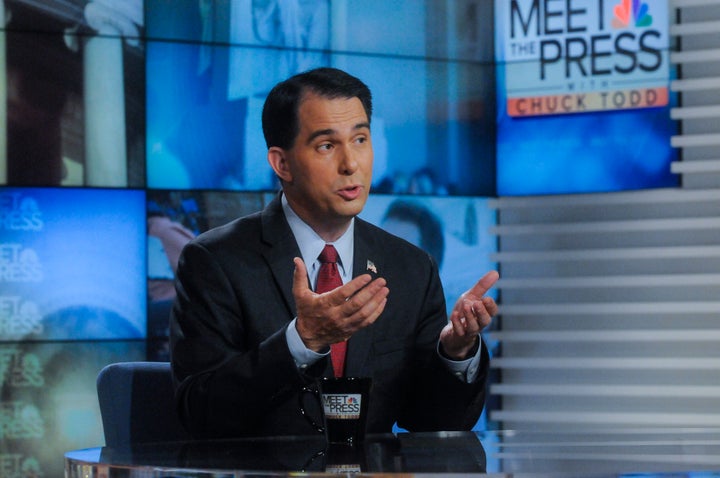
WASHINGTON -- Wisconsin Gov. Scott Walker was resoundingly mocked this weekend for saying a border wall between the U.S. and Canada was a "legitimate issue for us to look at" -- the latest in a series of extreme statements the GOP presidential candidate has made on immigration.
Building a wall would be a drastic measure. And it's been ridiculed as a policy suggestion by Democrats and Republicans alike.
But his proposal is geared toward addressing a problem that actually exists, at least to some degree, according to government reports and officials. There are vulnerabilities along the U.S.-Canada border, and the government has worked to improve security there in recent years. A border wall would be exhorbitantly expensive and would likely damage commerce and relationships with Canada. But border security between the U.S. and Canada is a legitimate issue.
"I don't think it's at all ridiculous for the United States to take that threat seriously," said Max Abrahms, a Northeastern University professor who studies terrorism. "For instance, I wouldn't be at all surprised if Islamists were sent via the northern border to attack the United States. That hasn't, of course, been the current strategy."
In looking at the northern border in 2010, the Government Accountability Office said the threat of potential terrorists crossing into the U.S. from Canada is higher than the threat from Mexico. That's in part because the border between the U.S. and Canada is so big -- more than 5,500 miles, or about 4,000 miles excluding Alaska. The southwest border, by comparison, is about 1,900 miles. That report found that only 32 miles of the nearly 4,000 miles along the northern border had reached "an acceptable level of security."
"We have had more cases where people who are suspected of alliances with terrorist organizations, or in fact have a terrorist suspicion in their background -- we see more people crossing over from Canada than we have from Mexico," Alan Bersin, then the Customs and Border Protection commissioner, said in May 2011.
Still, government officials insist they are taking the threat seriously and putting more resources toward combatting the problem.
Current CBP Commissioner R. Gil Kerlikowske told the Canadian magazine Maclean's in a report published in January that the GAO's 2010 assessment that only a small fraction of the northern border is secure is "not an accurate reflection" of the level of border security between the U.S. and Canada.
CBP did not return a request for more data on its current northern border operations, but publicly listed figures show that security efforts along the U.S.-Canada border are up considerably from the past, part of a general increase in border security. In 2001, Customs and Border Protection stationed 340 agents along the northern border. By 2012, there were 2,200 agents there, according to DHS.
U.S. Border Patrol agents apprehended about 3,300 people along the northern border in fiscal year 2014, compared with about 480,000 people on the southwest border and about 3,900 people on the coastal border.
Border patrol agents are not the only component of security. The Obama administration ramped up northern border security efforts beginning in 2009. The government operates unmanned aerial drones along the border and uses sensors to catch illegal activity, in addition to working with Canada to detect threats.
DHS created its first northern border strategy in 2012, which is focused on information-sharing with Canada and risk-based assessments for how to use resources.
Kerlikowske told Maclean's that CBP has "added a huge amount of resources," including a surveillance unmanned aircraft, more than 2,000 border patrol agents and working more with state and local law enforcement.
He said there are instances of potential terrorists trying to cross into the U.S. from Canada, but they are rare.
"We've seen people that have been associated with organizations that are recognized as a threat making attempts [to cross]," Kerlikowske told the magazine. "It is a very minimal number of people."
